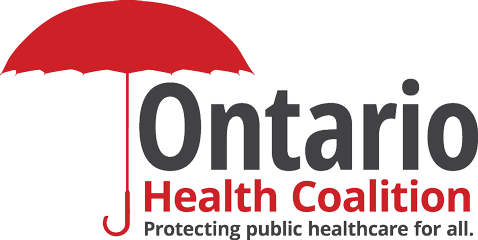Sault doctors say deal won’t cure region’s health woes: SAULT STAR HEALTH VAULT
Posted: March 30, 2025
(Mar 30, 2025)
By: Jeffrey Ougler, The Salt Star
Despite beefed up rewards for physicians working after hours and being on call, the deal ratified by Ontario doctors Saturday definitely won’t be the panacea for Northern Ontario health care, two Sault Ste. Marie physicians say.
Both Dr. Alan McLean and Dr. Janice Willett say some strides were made in the pact — reached late last month and ratified by doctors on the weekend — to mollify overworked doctors in this underserviced region.
But because many details remain sketchy, it is practically impossible to give the document a clean bill of health, they say.
”For the first time — or more specifically this time — there has been been targeted funds,” said Willett, a Sault gynecologist and District 9 chair of the Ontario Medical Association for northeastern Ontario.
”In other words, they’ve said, ‘There is a problem with after-hours workloads with some specialties and getting these people to stay in Ontario,’ so they’ve targeted funds.”
The deal provides fee increases for doctors of about two per cent each year over the four years, as well as premiums for after-hours work, being on call, and treating patients over 75.
Willett said that for after-hours procedures — mostly surgical — physicians will now receive a 40-per-cent premium for work done after 6 p.m., compared to the previous 30 per cent. For treatment performed after midnight, they’ll pocket a 62.5-per-cent premium, compared to the present 50 per cent.
”Previously, we’d just see a certain percentage go across the board, so they’ve made some brave decisions that may not be politically correct because the majority of physicians may not be after-hours physicians,” Willett said.
”But I think it’s a step in the right direction and I think we could probably build on it as long as they don’t lose the momentum.”
The deal also sets the course for primary-care reform in which family doctors would gather into group practices and be paid according to the level of care patients require rather than for each service.
The so-called ”rostering” model is currently being tested and evaluated in seven pilot projects across the province.
”Physicians will be able to look at the evaluation and determine . . . if that’s the type of practice they wish to be involved with,” said Dr. Ronald Wexler, president of the Ontario Medical Association, which represents 24,000 doctors.
The government hopes to have 80 per cent of all family doctors involved within four years.
McLean, president of the Algoma West Academy of Medicine, said he has doubts about how this model will impact the Sault.
”We already have the Group Health Centre that has clustered a big group of doctors together and there’s no real solid plans for how (the province) is going to do that with the rest of us,” he said.
”So I don’t think that will affect us any time in the near future.”
Willett contended that the deal’s authors didn’t pay enough attention to Northern Ontario’s unique health-care situation, including matters that must be addressed if the area is to have any ground to stand on in its ongoing effort to recruit and retain doctors.
”The problem is that whenever we have a provincial agreement, it gets watered down because the amount has to go across the board,” she said. ”There are still unique solutions to be found for Northern Ontario. Some of these incentives aren’t enough.
”In other words, if the incentive is the same to practise in Chatham, the question is, what is going to make the physician come to Sault Ste. Marie?
”So we’re still not there completely.”
She did applaud a plan to review Northern physician recruitment and retention by Nov. 30.
A pressing issue for Ontario doctors is the Canadian Medical Protective Association’s decision to introduce a regional rating to its fee structure starting in 2001 for Canada’s 58,000 doctors who rely on CMPA for malpractice insurance.
By January 2001, certain Ontario high-risk specialists, such as obstetricians and gynecologists, could be shelling out annual insurance fees as high as $61,000; many now pay $29,000, Willett said.
”It’s not necessarily that the (Ontario) doctors are any worse,” she said. ”We seem to be a little bit more Americanized than the other provinces.”
According to CMPA figures posted on the association’s web page, the average award or settlement on closed cases between 1989 and 1999 was $131,000 nationally. The Ontario average of $172,000 during the same period was 31 per cent higher than the national average and more than 156 per cent higher than that of Quebec, whose average award/settlement was $67,000, about half of the national average.
”Some centres are saying, ‘We can’t accept prenatal patients because I can’t afford my malpractice insurance next January,’ ” Willett said.
The agreement reached Saturday states that a committee will be struck to study the matter and by June 15, a report will be presented determining the viability of developing an independent malpractice insurance agency, recruiting a private insurance company or negotiating the matter further.
”That’s one of the red flags in the agreement,” Willett said. ”But I also understand with the biological clock of pregnant patients ticking, that’s the one place that everybody’s back is against the wall.
”That’s the one place to watch in this agreement, to see what happens June 15.”
Meanwhile, a patients’ advocacy group warned that Ontario residents are going to be paying more for medical services thanks to the new deal between the province and doctors.
”This deal is going to lead to more user fees and privatization,” said Lynn Simmons, spokeswoman for the Ontario Health Coalition.
The deal allows the medical association and the Health Ministry to drop up to $50 million worth of publicly insured services from the Ontario Health Insurance Plan.
Cutting OHIP services is one way of reducing the cost of physicians’ billings, a move referred to by the medical association and the province as ”tightening and modernizing.”
They argue some services are outdated or cosmetic in nature, and that other procedures now require fewer visits than OHIP covers.
Click here for the original article


